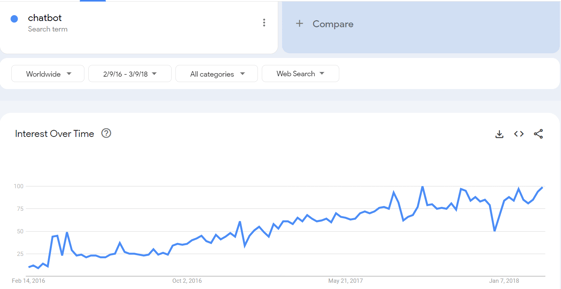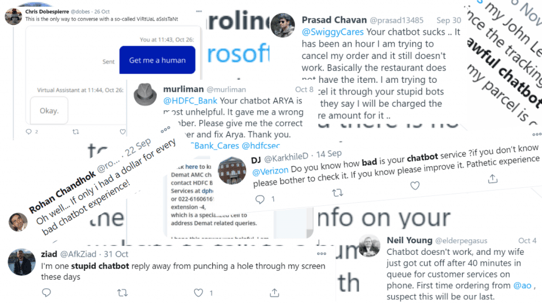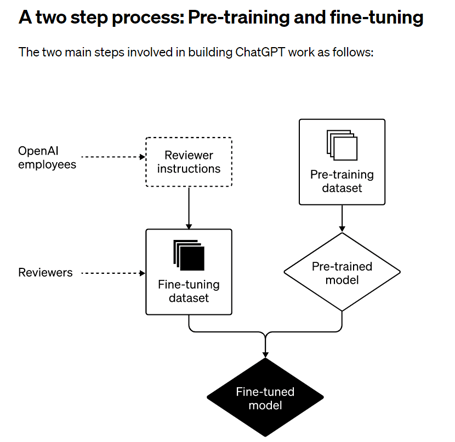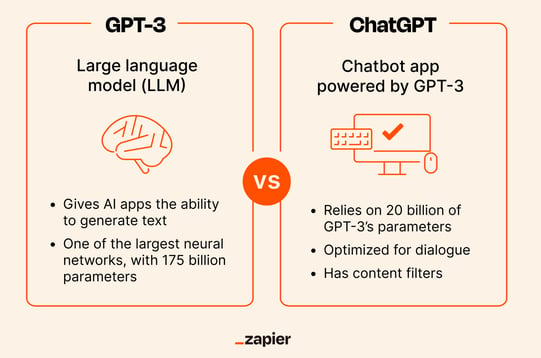How GPT will be a game changer in customer support?

Read Time: 7 minutes
In our previous blog, we delved into the world of ChatGPT and what it means for the future of employee experience. While AI has made significant strides in the customer service industry, chatbots have failed to deliver the high-quality support and quick resolutions that customers demand. In this article, we will examine how the latest launch of GPT-3.5 has the potential to redefine the value that chatbots couldn't deliver for customer experience. Additionally, we will explore how GPT-3.5 could have an impact other use case of the Customer Care and Services experience.
The rise and fall of chatbots in customer service

Chatbots were once touted as the future of customer support. Around 2016-2017, the hype surrounding chatbots reached its peak with numerous businesses adopting them to enhance their customer service. Chatbots were expected to provide prompt, efficient, and personalized responses to customers' queries. They were seen as a cost-effective solution that would reduce the need for human customer service representatives. However, despite the high expectations and positive intentions, chatbots for customer support failed to meet the expectations.

In the past, chatbots often left customers feeling disillusioned for several reasons.
- Most chatbots were built using rule-based systems, which means that they could only respond to queries based on predefined rules. This resulted in chatbots providing generic responses that did not cater to the specific needs of the customers. This lack of contextual understanding led to frustrated customers who felt that their queries were not being addressed effectively.
-
Training the chatbots on company data was a costly, long and tedious process, leading to delays in deployment and poor performance.
-
The accuracy performance of the responses was poor.
-
Earlier chatbot models had difficulty keeping context from previous answers, leading to disjointed conversations that frustrated customers.
-
These models were not generative. Earlier chatbots were often little more than an FAQ or knowledge base search template, limiting their usefulness in solving complex customer problems.
-
Multilingual capabilities were often weak in the past, requiring the use of multiple cognitive packages or services to benefit from language detection and multilingual comprehension.
New Hope with GPT-3.5
Since the pandemic struck, we have seen a shift towards digital consumption, and businesses have had to adapt quickly to cater to their customers' changing needs. Digital communication has become the norm, and it's critical for businesses to provide a seamless customer experience across all touchpoints, whether online or offline. In fact, according to Zendesk, nearly three out of five consumers report that good customer service is essential for them to feel loyal to a brand.
That's where GPT-3.5, a solution by OpenAI, comes in. GPT-3.5 offers a range of unique features:
- Large Scale Pre-Training: ChatGPT has been pre-trained on a massive corpus of text data, allowing it to understand and generate responses to a wide range of topics and conversation styles.
- Contextual Understanding: ChatGPT is designed to understand and remember the context of a conversation, enabling it to generate more relevant and personalized responses.
- Multi-Turn Conversations: ChatGPT can engage in multi-turn conversations, meaning it can respond to multiple messages and continue a conversation for an extended period of time.
- Multilingual Capabilities: ChatGPT can understand and generate responses in multiple languages, making it a more versatile conversational agent.
- Continual Improvement: As an AI language model, ChatGPT can continually learn and improve based on user interactions and feedback, allowing it to become more accurate and useful over time.
Furthermore, OpenAI lets customers create fine models. The fine-tuned model of GPT refers to a version of the original GPT (Generative Pre-trained Transformer) model that has been trained further on a specific task or domain. The fine-tuning process involves taking the pre-trained GPT model and training it on a smaller dataset such as Internal company information.
“Developers can now fine-tune GPT-3 on their own data, creating a custom version tailored to their application. Customizing makes GPT-3 reliable for a wider variety of use cases and makes running the model cheaper and faster.
You can use an existing dataset of virtually any shape and size, or incrementally add data based on user feedback. With fine-tuning, one API customer was able to increase correct outputs from 83% to 95%. By adding new data from their product each week, another reduced error rates by 50%.” - Open.ai

The fine-tuning process allows ChatGPT to learn from your own specific data beyond public data, tailoring the information it provides and ensuring a positive experience for its users. With its cutting-edge features and efficient design, ChatGPT is a game-changer in the world of customer support and service.
Let's discover GPT-3.5 for customer experience!
Use Cases of GPT-3.5 in Customer Experience

Gartner forecasts a significant increase in the adoption of AI-powered call centers, with the proportion of customer interactions handled by AI expected to grow from 2% in 2022 to over 15% by 2026. This trend is projected to continue to accelerate, with a projected doubling to 30% by 2031. Not only this, according to a recent McKinsey survey from 2022, but the adoption of AI has also increased by more than twofold over the past five years, and businesses are investing more in this technology. This trend indicates that generative AI tools such as ChatGPT have the potential to revolutionize the customer experience.
The popularity of generative AI tools is surging, prompting companies to swiftly incorporate these tools into their products. Companies such as Meta, Canva, and Shopify are utilizing GPT's technology to respond to customer queries.
Here are the 2 use cases:
1. Agent Assists
GPT-3.5 is an interesting tool to lighten the workload of call center agents, allowing the employees to deliver excellent customer service while handling frustrated or difficult customers and managing a high volume of calls at a fast pace.
For instance,
- GPT-3.5 can generate summary of call center transcripts (phone calls and live chats) that can be incorporated in CRM or ticketing systems.
- GPT-3 can generate resolution recommendation to agents based on internal company documentations.
2. Sentiment Analysis
GPT-3.5 can be used for sentiment analysis. i.e., identify the sentiment expressed in a piece of text, such as positive, negative, or neutral.
For instance,
- Improved accuracy: GPT-3.5 has the potential to improve the accuracy of sentiment analysis by leveraging its natural language generation capabilities.
- Automatic sentiment labeling: GPT-3.5 can generate sentiment scores for new documents, which can be useful for automating the sentiment analysis process.
- Transfer learning: GPT-3.5 can be refined to a data set relevant to the task, making it more efficient than training a model from scratch.
Konverso & GPT-3.x
Konverso is dedicated to continuously upgrading its conversational AI platform by integrating the latest technological advancements. It is currently working on incorporating GPT-3.x into its platform, enabling, for instance, customers to create custom GPT models based on their internal company and tech support documentation. This highly anticipated feature will be available to all Konverso customers in the first half of 2023.
Key features will be
- Applying GPT on internal company documentation and tech documentation.
- Implementation of a Human in the Loop process to review GPT learning.
- Combination of Q&A and generative services
- Language detection and multilingual responses.
- Text summarization
With the advanced capabilities of GPT-3.x and the user-friendly Konverso platform, customers will have the ability to generate unprecedented value from their conversational AI solution. This integration will empower customers to create more efficient and effective workflows, improve communication with their customers, and streamline internal processes, ultimately enhancing the overall customer experience.
SOURCES: https://techmonitor.ai/technology/ai-and-automation/call-centre-ai https://techcrunch.com/2023/02/27/meta-says-it-is-experimenting-with-ai-powered-chat-on-whatsapp-and-messenger/ https://botscrew.com/blog/chatgpt-how-customer-service-can-benefit-from-a-gpt-3-chatbot/ https://finance.yahoo.com/news/how-business-is-already-using-chatgpt-and-other-ai-tech-183828556.html?guccounter=1&guce_referrer=aHR0cHM6Ly93d3cuZ29vZ2xlLmNvbS8&guce_referrer_sig=AQAAAHTGMrSGsrnQy85GyPv8uMKW_aVWgxTMFkGTobIXtgWE9x7w4MBXIsE3JJ5D3b7eRKXG8nRYfWpBYF74S5MbMf3egwgMGj7t8p-XsMoAkR3rTZ4anojCXyr2uEJRGRmBKcEb8G8Hv4o7Hepy-iDcd1VtO51G6YmpymKy5gKkjeEt#:~:text=Forbes%20recently%20reported%20that%20Meta,to%20further%20enhance%20the%20technology.https://www.mckinsey.com/featured-insights/mckinsey-explainers/what-is-generative-aihttps://www.cbinsights.com/research/report/most-successful-chatbots/ https://www.kdnuggets.com/2021/12/chatbot-transformation-failure-future.html https://openai.com/blog/customizing-gpt-3




